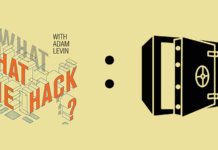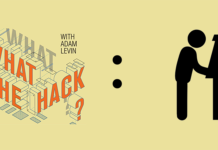
There are lots of good reasons to follow companies on social media — to gain insight into the brand’s priorities, learn about deals, seek inspiration, get behind-the-scenes looks, berate them for bad customer service, and so on. But who you follow on social media isn’t always private, and there are people out there who will use who you follow to try and steal your money.
A new report from ZeroFOX, a security technology company, suggests that following banks on Instagram could make you a target for scammers. ZeroFOX used machine-learning tactics to analyze 2 million Instagram posts related to 37 of the biggest U.S. financial institutions and identified more than 4,500 unique “money-flipping” scams among those posts.
The good news is the math: Because only 0.24% of the posts were scams, it’s safe to say they’re not a massive threat. Still, if a scam is out there, there’s a chance someone will fall for it. This analysis wasn’t an exhaustive look at Instagram scams, either: ZeroFOX was looking for a specific type of scam (we’ll explain money flipping in a minute), and not all scams use bank-specific hashtags (how ZeroFOX classified bank-related posts). So it could be a bigger problem than the ZeroFOX numbers suggest.
Facebook, which owns Instagram, sent this statement via email to Credit.com, regarding ZeroFOX’s report:
“Facebook … already employs machine-learning tactics to detect and prevent abuse, in addition to coordinating with banks and other companies through our threat intelligence platform, ThreatExchange. More than 400 companies participate in ThreatExchange, including ZeroFOX, to share information about bad actors and tackle industry-wide issues together. As background, our anti-abuse systems run more than 2 million classifiers, which are retrained every day to stay ahead of the evolving tactics used by scammers.”
What Is Money Flipping?
This is how a money-flipping scam goes, according to ZeroFOX: The scammer convinces consumers to give them money — generally between $50 and $1,000 — by promising they can turn it into 10 times as much money. The scammers, of course, don’t follow through on their deal once they’ve received the victim’s money.
There’s also a version that involves the consumer giving the scammer their bank account information, the scammer sending the consumer a fraudulent check and then the scammer withdrawing funds from the consumer’s bank account before the check has bounced.
Who Is Vulnerable?
Scammers promote their so-called services by hashtagging them with the same tags a bank might use (among others), the idea being people who are interested in a bank’s activity would click the hashtag and find the post. The posts, unsurprisingly, often depict wads of cash and use money-related emoji. The scammers may create multiple fake accounts to comment on their posts, giving positive testimony and credibility to the ruse.
ZeroFOX also found that scammers target people who follow banks. Using a fake account, ZeroFOX followed “all of the financial institutions with verified presences on Instagram,” and within 48 hours, the fake account had 23 scam followers, many of whom requested a follow back. Two scam accounts then sent the fake account a direct message, initiating a scam.
Anyone could be a target, though scammers often go after people who they think may be in dire financial straits. But the same scam-avoidance advice applies to everyone: Don’t send a stranger your bank account information or personally identifying information. If you have a bad feeling about something, trust your instincts. Taking time to exercise caution or walking away from something suspicious is much better than losing money or having your identity stolen.
As a good rule of thumb, monitor your credit for signs of identity theft and fraud, because those things can happen to everyone, not just scam victims. The sooner you spot suspicious activity on your credit report, the faster you can fix it. You can get your free annual credit reports on AnnualCreditReport.com, and you can get two free credit scores and monthly updates on Credit.com.
This article originally appeared on Credit.com and was written by Christine DiGangi.










